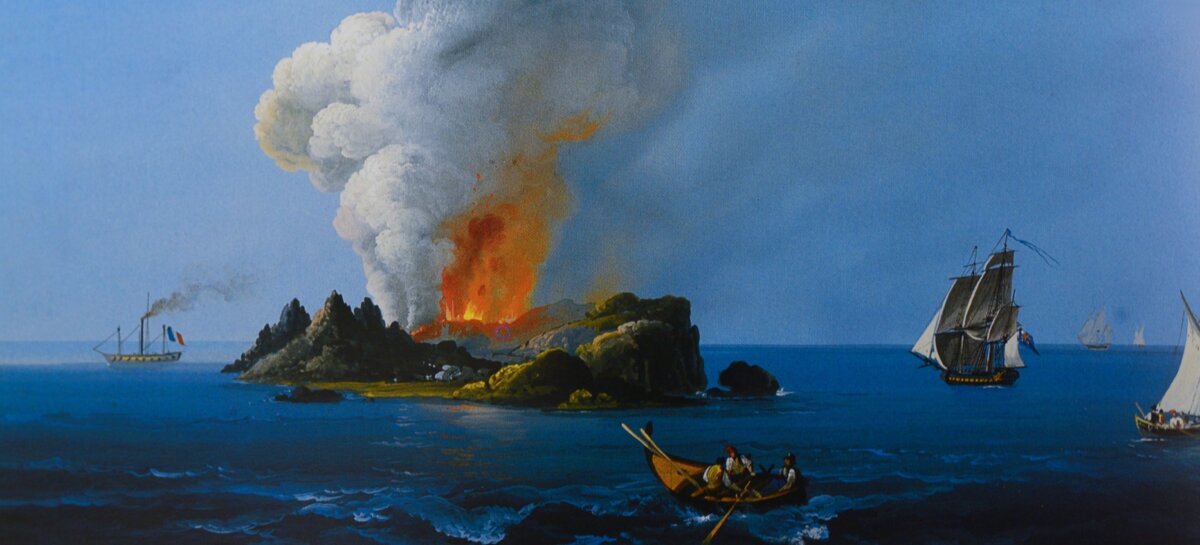Ferdinandea Island
Ferdinandea Island (ìsula Firdinandea in Sicilian, historically known as Graham Island in English and île Julia in French) is a vast rocky platform located about 6 meters from the sea surface, in the Sicilian Channel, between Sciacca and the island of Pantelleria .
“Once upon a time there was an island that is no longer there”, it would seem the beginning of a children’s fairy tale and instead describes a true story. It was 1831 when, in the Sicilian channel, the mouth of a submarine volcano emerged which gave life to a conical island with two sulphurous lakes and a sort of stream that dragged the water from the crater towards the sea.
The territory had an area of about four kilometers and a height of sixty-five meters. The island was mainly composed of tephra, an easily eroded eruptive rocky material and the waves of the sea, therefore, did not take long before totally crumbling it.
In January 1832 the island disappeared definitively, but the short life of this piece of land did not prevent the sovereigns of the time from claiming ownership of it in turn.
The first reports of the submarine activity of the island date back to the First Punic War, subsequently it appeared and disappeared a few times during the 17th century, however remaining on the surface only for a very short time.
In the period in which it was above sea level, the island had a conical shape due to its volcanic activity and, precisely because of the latter, its surface was rocky and formed by residual material from the various eruptions.
In 1846 and 1863 the islet reappeared again on the surface and then disappeared again after a few days. Only the many names left following the international dispute remain: Giulia, Nerita, Corrao, Hotham, Graham, Sciacca and Ferdinandea.
Recent studies carried out by the National Institute of Geophysics and Volcanology have discovered that “Ferdinandea” is part of a highly developed system of submarine volcanoes: the island is in fact one of the accessory cones of the Empedocles submarine volcano, a gigantic volcanic edifice which has in common with Etna, the best known volcano in Sicily.
The islet immediately aroused the interest of England first and then of France as both nations were looking for strategic points in the Mediterranean Sea for the landings of their fleets, both merchant and military.
King Ferdinand II, noting the international interest that the islet had aroused, sent the bomber corvette “Etna” under the command of Captain Corrao who, having landed on the island, planted the Bourbon flag, baptizing the island “Ferdinandea” in honor of the ruler.
It wasn’t long before the island began to sink, in fact the people traveling on the Francesco I vaporetto reported that the island had a perimeter of half a mile and the height was getting lower and lower.
In September 2006, a pressure sensor was placed on the underwater peak of Ferdinandea to monitor the seismic activity of the important volcanic edifice.
The “sarcophagus” containing the recording measuring instrument was recovered by another team on September 22, 2007.












